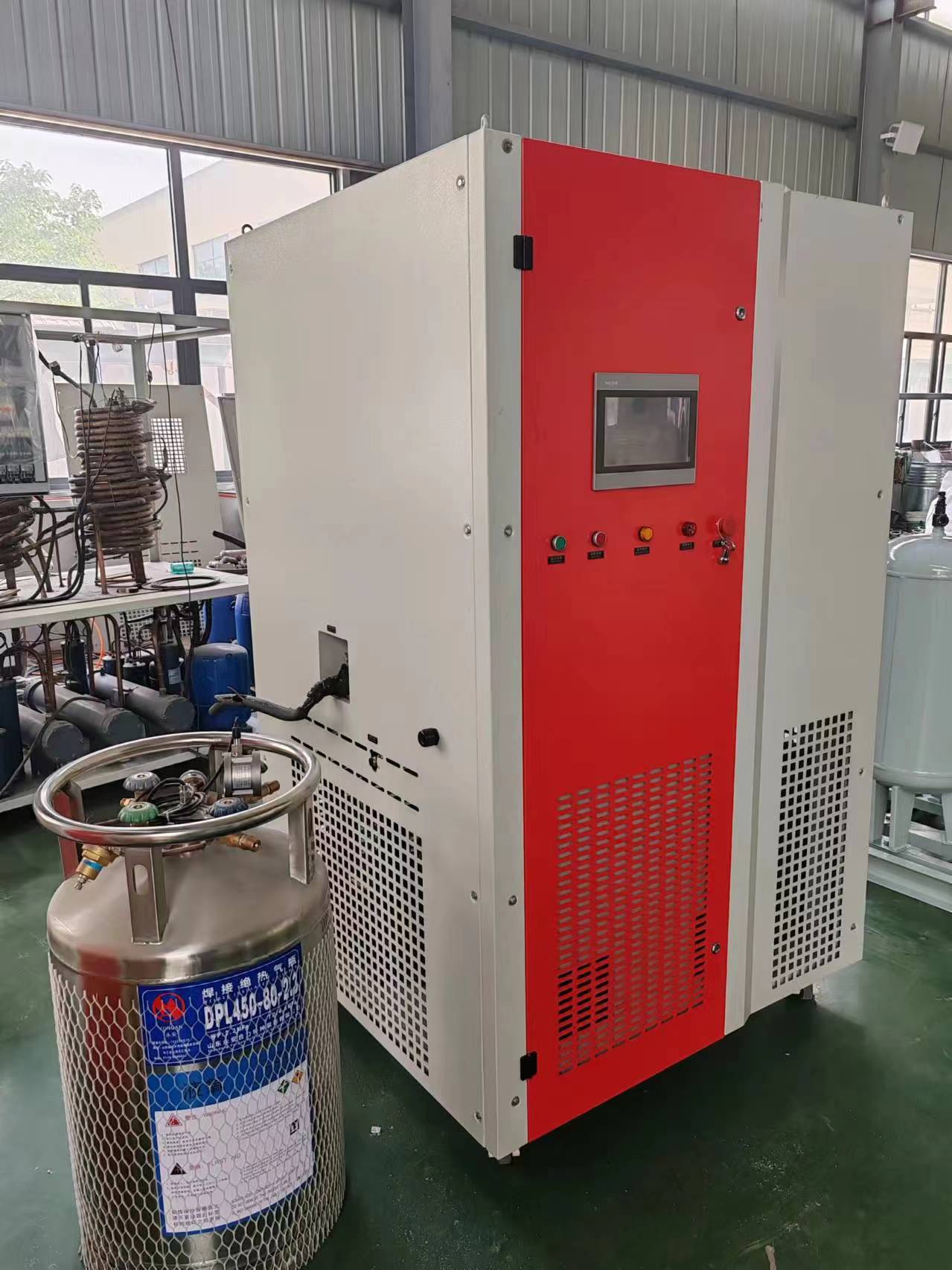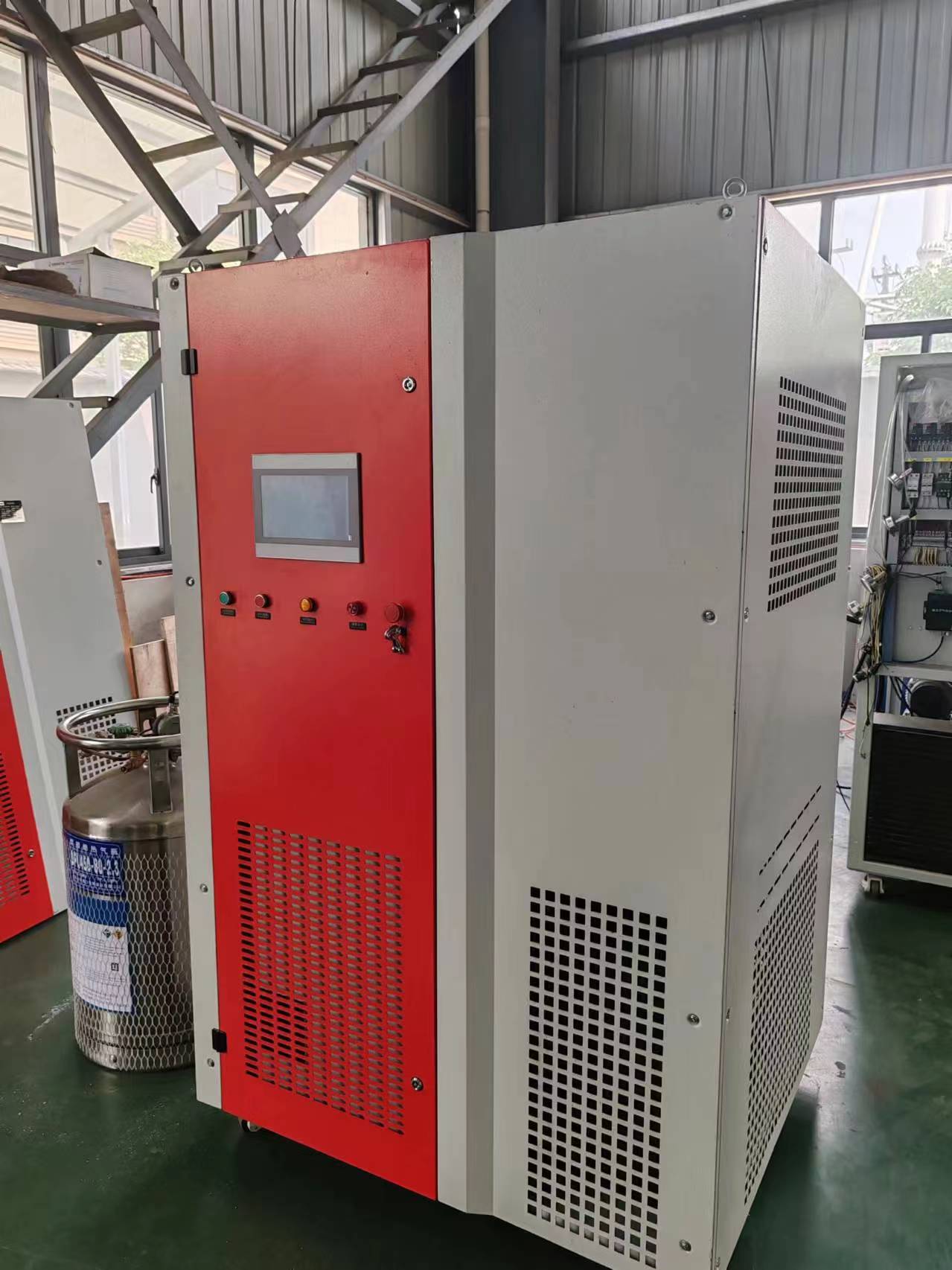Miniaturization of industrial liquid nitrogen usually refers to the production of liquid nitrogen in relatively small equipment or systems. This trend towards miniaturization makes the production of liquid nitrogen more flexible, portable and suitable for a more diverse range of application scenarios.
For the miniaturization of industrial liquid nitrogen, there are mainly the following methods:
Simplified liquid nitrogen preparation units: These units typically use air separation technology to extract nitrogen from the air by methods such as adsorption or membrane separation, and then use refrigeration systems or expanders to cool the nitrogen to a liquid state. These units are typically more compact than large air separation units and are suitable for use in small plants, laboratories or where on-site nitrogen production is required.
Miniaturization of low-temperature air separation method: Low-temperature air separation method is a commonly used industrial nitrogen production method, and liquid nitrogen is purified through multi-stage compression, cooling expansion and other processes. Miniaturized, low-temperature air separation equipment often uses advanced refrigeration technology and efficient heat exchangers to reduce equipment size and improve energy efficiency.
Miniaturization of vacuum evaporation method: under high vacuum conditions, gaseous nitrogen is gradually evaporated under pressure, so that its temperature is reduced, and finally liquid nitrogen is obtained. This method can be achieved through miniaturized vacuum systems and evaporators, and is suitable for applications where rapid nitrogen production is required.
The miniaturization of industrial liquid nitrogen has the following advantages:
Flexibility: The miniaturized liquid nitrogen production equipment can be moved and deployed according to actual needs to adapt to the needs of different occasions.
Portability: The device is small, easy to carry and transport, and can quickly establish nitrogen production systems on site.
Efficiency: Miniaturized liquid nitrogen production equipment often uses advanced technology and efficient heat exchangers to improve energy efficiency and reduce energy consumption.
Environmental protection: Liquid nitrogen, as a clean coolant, does not produce harmful substances during use and is friendly to the environment.
The process of liquid nitrogen production mainly includes the following steps, the following is a detailed process introduction:
Air compression and purification:
1. The air is first compressed by the air compressor.
2. The compressed air is cooled and purified to become processing air.
Heat transfer and liquefaction:
1. The processing air is heat exchanged with the low-temperature gas through the main heat exchanger to produce liquid and enter the fractionating tower.
2. Low temperature is caused by the expansion of high pressure air throttling or the expansion of medium pressure air expander.
Fractionation and purification:
1. Air is distilled in the fractionator through layers of trays.
2. Pure nitrogen is produced at the top of the lower column of the fractionator.
Recycle cold capacity and product output:
1. The low temperature pure nitrogen from the lower tower enters the main heat exchanger and recovers the cold amount by heat exchange with the processing air.
2. Reheated pure nitrogen is output as a product and becomes nitrogen required by the downstream system.
Production of liquefied nitrogen:
1. The nitrogen obtained through the above steps is further liquefied under specific conditions (such as low temperature and high pressure) to form liquid nitrogen.
2. Liquid nitrogen has an extremely low boiling point, about -196 degrees Celsius, so it needs to be stored and transported under strict conditions.
Storage and stability:
1. Liquid nitrogen is stored in special containers, which usually have good insulation properties to slow down the evaporation rate of liquid nitrogen.
2. It is necessary to regularly check the tightness of the storage container and the amount of liquid nitrogen to ensure the quality and stability of liquid nitrogen.
Post time: May-25-2024
 Phone:
+86-18069835230
Phone:
+86-18069835230 E-mail:lyan.ji@hznuzhuo.com
E-mail:lyan.ji@hznuzhuo.com








